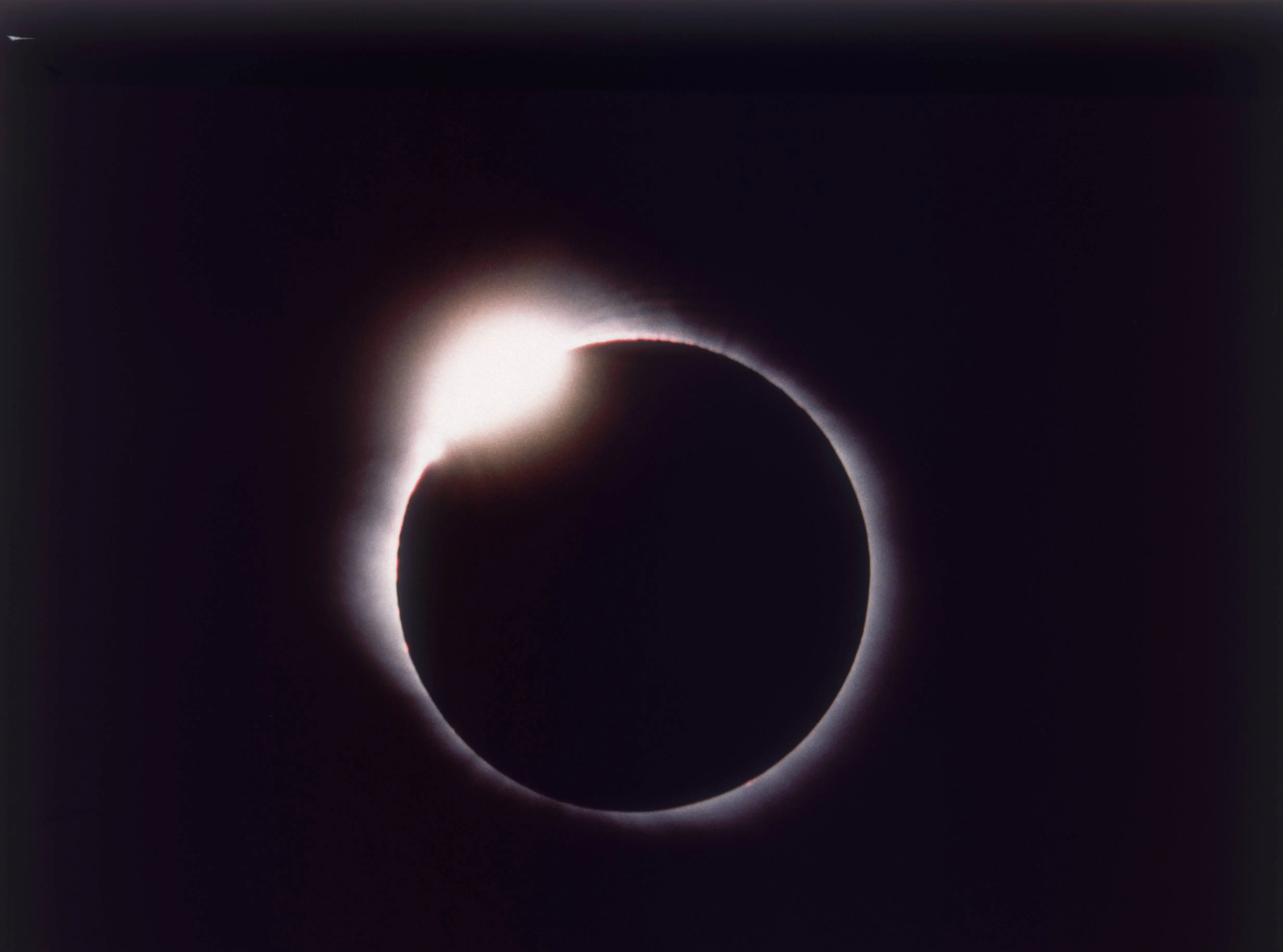C/2025 V1 Borisov is racing toward the sun with 3I/ATLAS-style oddness, and the answers are nowhere in sight
Wednesday 11/12/2025 at 9:22AM EST
-
 The 'diamond ring' stage of a total solar eclipse, Guadaloupe, 26th February 1998. (Photo by Space Frontiers/Hulton Archive/Getty Images)
The 'diamond ring' stage of a total solar eclipse, Guadaloupe, 26th February 1998. (Photo by Space Frontiers/Hulton Archive/Getty Images)C/2025 V1 Borisov is the new comet on everyone’s screen for good reason. Discovered on November 2 by Gennadiy Borisov, C/2025 V1 Borisov passed Earth’s orbit at roughly 103 million kilometers on November 11 and is due to reach the sun on November 16. Early images show a compact coma and a muted or hard-to-see tail, which drew quick comparisons to 3I/ATLAS after its late October solar flyby. The measured path is steep and slightly hyperbolic, with an inclination near 113 degrees on a retrograde track and an eccentricity of a hair above 1.
That looks almost interstellar on first pass, yet the mainstream read points to a long-period comet kicked in from the Oort cloud. What matters now is more data. Continued astrometry will refine the orbit and reveal any non-gravitational push from jets, while spectroscopy will test whether the weak tail is dust-poor activity or just tricky viewing geometry. Expect the numbers to tighten as the observation arc grows.
What is C/2025 V1 (Borisov)?: Discovery, orbit, and what’s confirmed
C/2025 V1 Borisov was first spotted on November 2 by a Crimean amateur who found interstellar 2I/Borisov in 2019. Current solutions place the comet’s closest Earth distance on November 11 at about 0.689 AU and its perihelion on November 16 at roughly 0.463 AU. The fit lists an eccentricity near 1.0096 and an inclination of around 112 to 113 degrees on a retrograde path.
These values can shift as measurements accumulate, but they explain the “fast and steep” track that observers are seeing. C/2025 V1 Borisov is faint, with estimated visual magnitudes around 13 to 14 in mid-November, and best seen before sunrise in Virgo with larger amateur telescopes. A separate May discovery named C/2025 J1 Borisov is unrelated.
On the morphology side, early frames show a condensed coma with little obvious dust structure. As per a Medium post dated November 9, 2025, Harvard scientist Avi Loeb stated,
“Similarly to 3I/ATLAS, C/2025 V1 does not display a clear cometary tail.”
He also noted the current orbit quality, writing,
“The orbital eccentricity of C/2025 V1 is 1.0095 with an uncertainty of 0.0026.”
Both points match what sky trackers are plotting and help frame the “nearly interstellar” label that appeared in headlines. The weight of evidence still favors a solar system origin until a stronger signature suggests otherwise.
Readers will also see viral claims and recycled figures from aggregators. Those posts often mix sound facts with hype about alien probes or “missing tails.” Treat those as background chatter and rely on ephemerides and professional reporting for distances, timing, and discovery details.
The 3I/ATLAS comparisons: What’s similar, what’s not, and what scientists are saying
C/2025 V1 Borisov is trending beside 3I/ATLAS because both travelled on unusual paths and showed non-textbook tails near the sun. The linkage ends there. NASA materials and professional coverage agree that 3I/ATLAS is interstellar and harmless, with a late October perihelion and no threat to Earth. C/2025 V1 Borisov is a separate object on its own track with a much closer apparent approach to Earth that is still far and safe by planetary standards.
Scientists have been careful to set expectations around 3I/ATLAS and, by extension, any lookalike hype. As per a Reuters report dated July 3, 2025, University of Hawaii astronomer Larry Denneau said,
“Beyond that we do not know very much, and there are many efforts underway to observe this object with larger telescopes to determine composition.”
In the same report, he added a reminder on comet behavior, stating,
“It currently has a faint coma.”
Both remarks read as evergreen caution and apply to early takes on C/2025 V1 Borisov as well.
Why is it racing sunward on a steep, almost interstellar path?
C/2025 V1 Borisov likely started far out in the Oort cloud, where weak stellar tides and distant encounters can shift orbits toward the inner solar system. Once inbound, subtle tugs from the giant planets and short observation arcs can make early fits look slightly hyperbolic, with e just over 1.
As the arc length grows, e often slides back toward 1, pointing to a bound or marginally bound long-period comet. The steep retrograde inclination near 113 degrees also matches the high latitude injections seen for many Oort cloud entries rather than an origin in the planetary plane.
The subdued tail does not make C/2025 V1 Borisov exotic by itself. Comets can be dust poor, dominated by CO or CO₂ outgassing, or simply badly placed for a bright tail given the phase angle. That is why teams are chasing spectra and higher signal-to-noise imaging. The priority list is straightforward.
First, refine the orbit with continued astrometry and see whether non-gravitational terms are required. Second, secure spectra to inventory volatiles and dust. Third, monitor brightness evolution through and after November 16 to test for outbursts or disintegration. Loeb’s key discriminator remains measurable thrust. As per a Live Science report dated November 10, 2025, Avi Loeb wrote,
“C/2025 V1 is not related to 3I/ATLAS if it did not employ non-gravitational propulsion.”
The observational record right now supports a normal, if quirky, long-period comet in C/2025 V1 Borisov, racing sunward on a steep path set by gravity and time.
Stay tuned for more updates.
TOPICS: C/2025 V1 Borisov, 3I/ATLAS, C/2025 V1 Borisov AVi Loeb